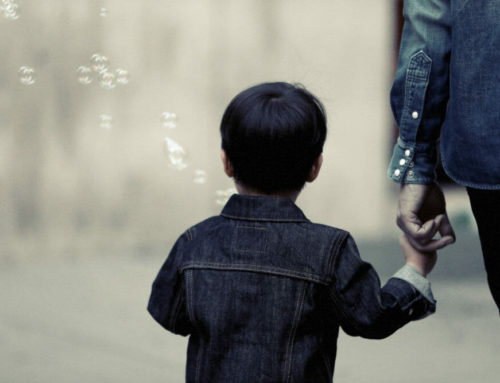You’ve plugged the outlets, gotten rid of the poisonous cleaning products, and locked up the alcohol and medications. You try to do everything you can to keep your child healthy and out of harm’s way.
But have you considered all kinds of safety? The examples above are all about physical safety, which is where we tend to focus. It’s easier to understand physical dangers and also to come up with solutions to avoid them. Emotional safety is just as important, but it’s something we don’t always think about. Just like keeping knives and dangerous items out of your child’s reach enhances physical safety in your home, there are steps you can take to provide emotional safety in your home.
When people (of any age) trust that their feelings will be responded to with sensitivity and respect, they feel safe. They will be more honest and vulnerable with you if they know they are in a safe place. Think about how you act with the people you trust the most. You feel free to share your deepest thoughts and feelings and you value the feedback you get from that person. It works exactly the same with your kids or teenagers. If they feel safe with you, they will express their thoughts and feelings more, be open to conversations with you, and listen to your feedback.
However, if a child feels even a little bit unsafe, they may be more fearful of criticism or rejection from you. Again, think about when this has happened in your own life. Has someone created an environment where you felt unsafe expressing yourself? How did you handle this? You probably stopped sharing your true thoughts and feelings with that person.
If your child feels unsafe, they will not want to share their true thoughts and feelings for fear of being criticized. They may just tell you what they think you want to hear because they think this is the best way to keep themselves as safe as possible. Their feelings may come out through their actions since they don’t feel safe opening up to you using words. They will likely behave more defiantly, act more defensively, and seem more uncooperative. They also will probably not be as open to talking with or listening to you in general.
By providing a more emotionally safe environment, you can have a stronger connection with your child, and at the same time, improve their behavior.
The following points are some guidelines that are intended to make your home more of an emotionally safe place for you and your family. These are rules that parents and kids should both be expected to abide by. Everyone in your family, including parents and kids, deserves to feel emotionally safe at home.
What makes a home a safe place?
- There is no physical violence.
- There is no emotional abuse.
- There is no shaming. Shaming someone makes them feel bad about who they are as a person. They get a sense that your view of them as a person is negative. Examples of shaming statements might be, “You are such a bad kid,” “You are a selfish person,” or “You never do anything right.” These tend to make your child feel bad about themselves and feel unsure if you truly like them as a person.
- Apologies are given sincerely when someone feels hurt by something someone else said or did.
- Everyone treats each other with respect. This means that there is no name-calling or sarcasm. Everyone feels like they are truly listened to by the other family members. Think about how you show respect toward other people such as your boss, a friend, or even strangers. Why would you show your child any less courtesy?
- All thoughts, feelings, and opinions are acknowledged as real and treated as important. No one tries to change or invalidate another person’s feelings. Statements such as “You’re not really sad” or “You’re just being too sensitive” can make the other person feel as if their feelings are wrong. (Note that this does not necessarily include actions. For example, your child should be allowed to feel angry and think “I’m angry” but that does not mean they are allowed to hit someone else.)
- Physical and emotional boundaries are respected. For example, if your child doesn’t want a hug, you don’t force him to. Or if they ask a sibling for some space, the sibling respects that request.
I’d love to hear your thoughts on emotional safety. Have you had any personal experiences where you felt unsafe? How have you tried to make your home an emotionally safe place?




